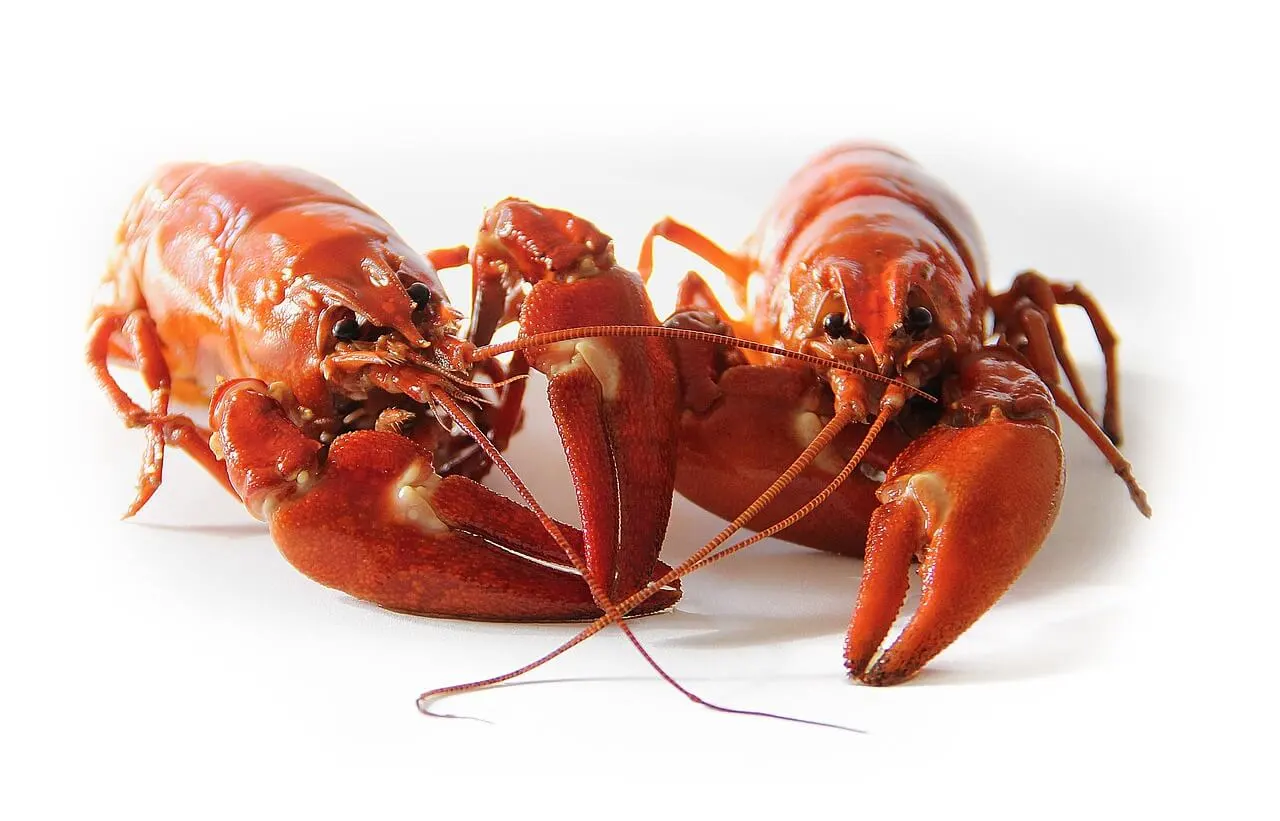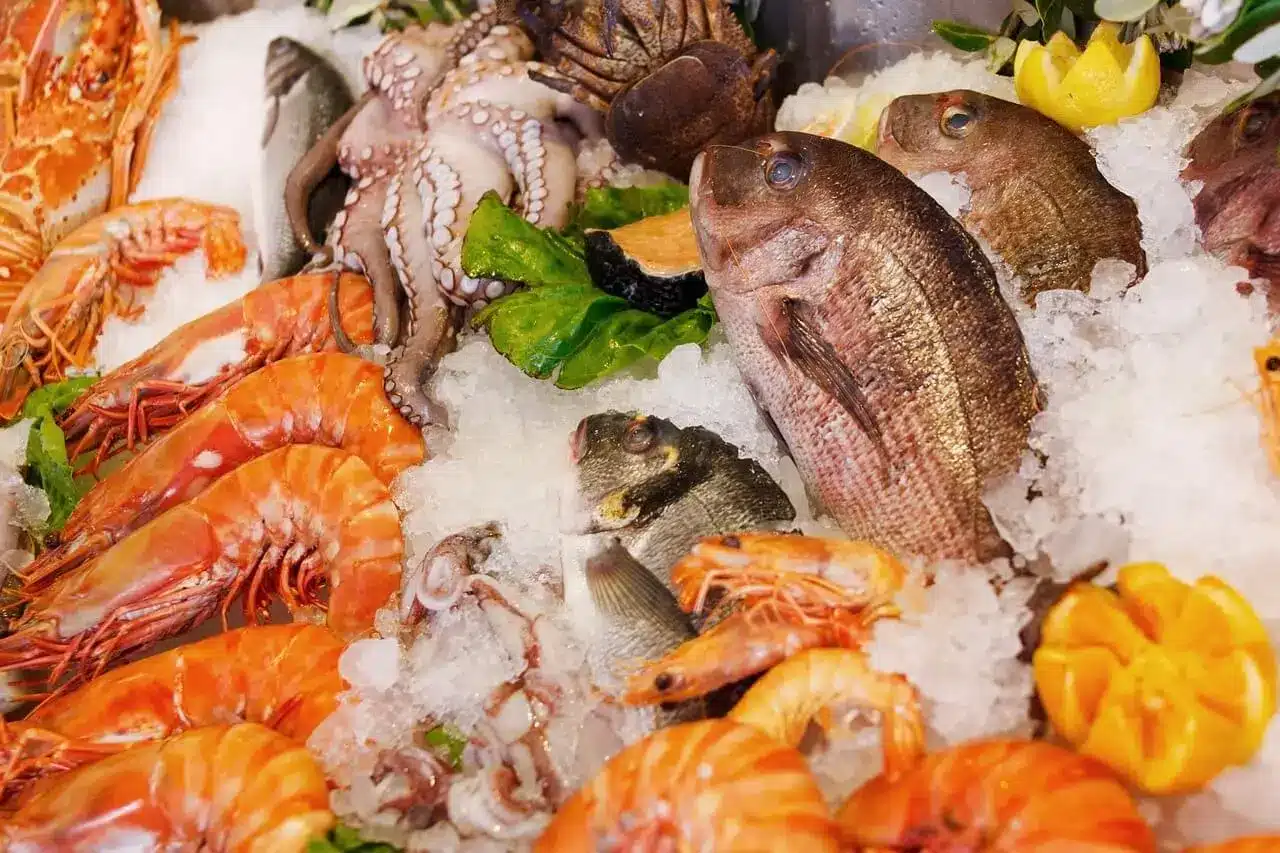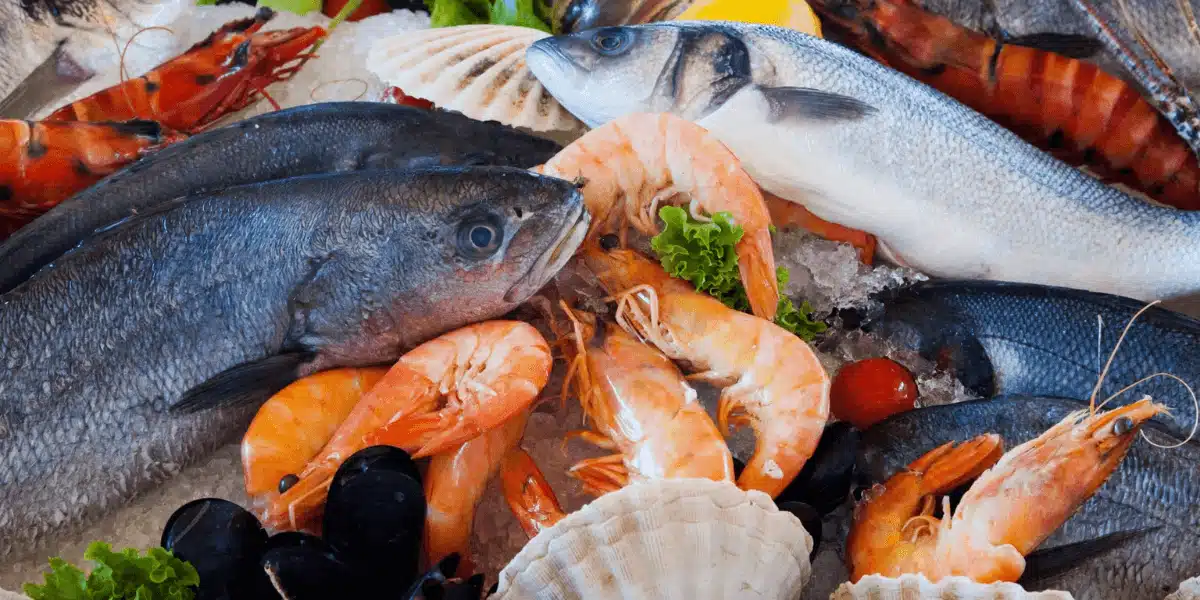Knowing how seafood affects diabetics is key for managing diabetes. This article looks at good and bad seafood choices for diabetics. It helps you make smart food decisions
Introduction to Seafood for Diabetics
Seafood for diabetics is an important topic in diabetes management. People with diabetes need to make careful food choices. This helps them keep their blood sugar levels under control. Seafood is known for being nutritious. However, not all seafood is good for diabetics.
It’s essential to know about the dietary needs of diabetics. The main goal is to manage blood sugar levels. Food choices have a big impact on this. Seafood can be very healthy. But, some types are better than others for diabetics.
The nutritional value of seafood varies. Some types are rich in omega-3 fatty acids and protein. These are good for heart health. But, other types may have too much sodium or unhealthy fats. These are not good for diabetics.
How seafood is cooked also matters. Grilled or steamed seafood is usually a healthier choice. Fried seafood or seafood with heavy sauces is not as good.
In short, seafood can be part of a diabetic diet. But, it’s important to choose and prepare it carefully. This helps diabetics enjoy seafood without harming their health.
Nutritional Profile of Seafood

It’s important to understand what’s in seafood for diabetics. This section explains the key nutrients in seafood and how they affect diabetes.
Omega-3 Fatty Acids in Seafood
Seafood has a lot of omega-3 fatty acids. These are good for the heart. They lower inflammation and heart disease risk. Fish like salmon, mackerel, and sardines are full of omega-3s.
Protein Content in Seafood
Seafood is also high in lean protein. This is good for diabetics because it doesn’t raise blood sugar. Protein helps build muscles. Fish like cod and tilapia, and shellfish like shrimp and crab, are good choices.
Vitamins and Minerals in Seafood
Seafood has many vitamins and minerals. These include vitamin D, B vitamins, zinc, and iron. Vitamin D is good for bones and the immune system. B vitamins help with energy and body functions.
Low-Calorie Options for Weight Management
Many seafood options have few calories. This helps with weight control, which is important for diabetics. Choosing lean fish and avoiding fried seafood is best.
Considerations for Sodium and Mercury
But, diabetics should watch out for seafood with a lot of sodium or mercury. Too much sodium can raise blood pressure. Mercury can be harmful to health. It’s best to eat less canned fish and big fish like shark and swordfish.
In short, seafood offers many benefits for diabetics. But, it’s important to pick the right types and cook them properly.
Seafood in a Diabetic Diet
Adding seafood for diabetics to their diet needs careful thought. This section looks closely at how seafood fits into a diabetic diet.
Benefits of Seafood for Blood Sugar Control
Seafood is good for controlling blood sugar. It has a low glycemic index, so it doesn’t cause quick blood sugar spikes. Stable blood sugar is very important for diabetics. Fish like salmon, trout, and sardines are good choices. They are nutritious but don’t raise blood sugar much.
Seafood for Heart Health in Diabetics
Seafood is also good for the heart. Diabetics often have heart risks. Omega-3 fats in seafood can lower these risks. They reduce bad fats in the blood and improve heart health. Eating fish rich in omega-3s is a smart choice for diabetics.
Weight Management with Seafood
Seafood can also help with weight control. It’s low in calories but high in protein. This helps you feel full and eat less. Keeping a healthy weight is key for managing diabetes.
Nutrient-Rich Choices for Overall Health
Seafood has many important nutrients. These include vitamins like B12 and D, and minerals like selenium and zinc. These support the immune system, energy levels, and more.
Caution with Certain Seafood Types
But, be careful with some seafood. Processed or canned seafood can have a lot of sodium. Too much sodium can cause high blood pressure. Also, some big fish have a lot of mercury. It’s best to avoid these.
In short, seafood for diabetics can be a healthy part of their diet. It’s good for blood sugar, heart health, weight control, and getting nutrients. But, picking the right types and watching out for sodium and mercury is important.
For more information on managing diabetes, visit the American Diabetes Association.
Types of Seafood to Avoid for Diabetics

When planning a diet with seafood for diabetics, it’s important to know which types to avoid. This section covers the seafood that might not be suitable for diabetics.
High Sodium Seafood
Firstly, diabetics should avoid seafood high in sodium. High sodium can raise blood pressure. This is a risk for people with diabetes. Processed seafood like canned tuna and smoked fish often have a lot of sodium. It’s better to choose fresh or frozen seafood with no added salt.
Seafood with Unhealthy Fats
Next, some seafood can be high in unhealthy fats. This includes seafood fried in oil or served with creamy sauces. These can increase bad cholesterol and are not good for heart health. Diabetics should opt for grilled, baked, or steamed seafood instead.
Mercury-Rich Seafood
Also, some types of fish have high levels of mercury. Mercury can be harmful to health. Large fish like shark, swordfish, and king mackerel often have more mercury. It’s safer to eat smaller fish like salmon, sardines, and trout.
In summary, diabetics need to be careful with seafood for diabetics. Avoiding high sodium, unhealthy fats, and high mercury seafood is important. Making the right choices can help manage diabetes better.
Healthier Seafood Options for Diabetics
Choosing the right seafood for diabetics is key to a healthy diet. This section focuses on the best seafood choices for diabetics.
Low Sodium Seafood Choices
First, look for seafood low in sodium. Low sodium options are better for blood pressure. Fresh fish like salmon, trout, and haddock are good choices. They don’t have added salt. Avoid canned or processed seafood, as they often have extra sodium.
Seafood with Healthy Fats
Next, choose seafood with healthy fats. Fish like mackerel, sardines, and albacore tuna are rich in omega-3 fatty acids. These fats are good for the heart. They help keep cholesterol levels in check. Grilled or baked preparations are best.
Small Fish with Less Mercury
Also, pick smaller fish with less mercury. Small fish like salmon, anchovies, and sardines have lower mercury levels. They are safer to eat regularly. Avoid larger fish like shark and swordfish, as they can have more mercury.
In conclusion, picking the right seafood for diabetics is important. Choose low sodium, healthy fat, and low mercury options. These choices help manage diabetes and support overall health.
Preparing Seafood Healthily for Diabetics

Cooking seafood for diabetics in a healthy way is crucial. This section gives tips on how to prepare seafood that’s good for diabetics.
Choosing Healthy Cooking Methods
Start by picking cooking methods that don’t add much fat. Grilling, baking, and steaming are good choices. They keep the fish’s natural taste and nutrients. Grilling adds a smoky flavor. Baking is great for using different herbs and spices. Steaming keeps most of the nutrients.
Using Healthy Seasonings
Then, think about how you season the seafood. Use herbs, spices, and citrus instead of lots of salt or heavy sauces. Herbs like dill or parsley and spices like paprika or garlic powder make the seafood tasty without harming blood sugar. Lemon or lime juice is great for adding flavor without salt.
Portion Control
Also, watch the portion sizes. Eating the right amount is important. It helps control blood sugar levels. A good portion size is about the size of your hand.
In summary, how you prepare seafood for diabetics matters. Use healthy cooking methods and seasonings. Keep portion sizes right. These steps make seafood a good choice for diabetics. For detailed nutritional information on seafood, visit Seafood Health Facts.
Smart Seafood Selections at Markets and Restaurants
Choosing the right seafood for diabetics at markets and restaurants is important. This section offers tips for making smart choices.
Picking Seafood at Markets
When at the market, go for fresh or frozen seafood. Fresh fish like salmon, trout, and cod are good choices. They are low in unhealthy fats and sodium. If you buy canned fish, check the label. Choose ones with low sodium and no added sugars.
Making Healthy Choices at Restaurants
Eating out? Choose wisely. Ask how the seafood is cooked. Grilled, baked, or steamed dishes are healthier. Avoid fried seafood or dishes with heavy sauces. These can have a lot of fat and calories.
Asking Questions
Don’t be afraid to ask questions. At restaurants, ask about the ingredients and cooking methods. This helps you make healthier choices. It’s important for managing diabetes.
In conclusion, making smart seafood for diabetics choices at markets and restaurants is key. Look for fresh, low-fat, and low-sodium options. Ask questions to ensure the seafood is cooked in a healthy way. This helps keep your diabetes under control.
FAQs
1. Why is seafood recommended for a diabetic diet?
Seafood is often suggested for diabetics because it’s healthy. It has a lot of good nutrients but not many carbs. This means it won’t make your blood sugar go up quickly. Fish like salmon and trout are full of omega-3 fatty acids. These are fats that are good for your heart. Diabetics need to take care of their heart health.
Seafood is also high in protein. Protein is important for keeping your muscles strong. It doesn’t raise your blood sugar like carbs do. Plus, seafood has vitamins and minerals that are good for your health. These include things like vitamin D and B vitamins. They help your body in many ways, like keeping your bones strong and helping you have energy. So, eating seafood can be a good way for diabetics to stay healthy. It gives them important nutrients without causing problems with their blood sugar.
2. What types of seafood should diabetics avoid?
Diabetics should stay away from seafood that has a lot of salt or unhealthy fats. Too much salt can raise your blood pressure. This is not good for diabetics. Some seafood, like canned tuna, can have a lot of salt. Also, avoid seafood that’s fried or has creamy sauces. These can have unhealthy fats. They can make you gain weight and are bad for your heart. Another thing to watch out for is mercury. Some big fish, like shark and swordfish, have a lot of mercury. It’s better to eat smaller fish like salmon or trout. They have less mercury. So, diabetics should choose seafood that’s low in salt, not fried, and doesn’t have a lot of mercury.
3. Can diabetics eat fried or breaded seafood?
It’s best for diabetics to avoid fried or breaded seafood. When seafood is fried, it absorbs a lot of oil. This adds a lot of fat and calories. Eating too much fat can lead to weight gain. It can also be bad for your heart. Breaded seafood can also be a problem. The breading usually has carbs. Carbs can make your blood sugar go up. Also, the breading can hide how much fat is in the food. So, it’s healthier to choose seafood that’s grilled, baked, or steamed. These cooking methods don’t add extra fat or carbs. They keep the seafood healthy for diabetics.
4. Healthy ways to prepare seafood for diabetics?
For diabetics, cooking seafood in a healthy way is important. Grilling, baking, and steaming are the best methods. These ways don’t add extra fat or calories. They keep the seafood healthy. When you grill fish, it gets a nice flavor without needing much oil. Baking is also good. You can add herbs and spices to make the fish tasty. This is better than using heavy sauces or butter. Steaming is another healthy option. It keeps the nutrients in the fish. You can steam fish with vegetables for a healthy meal.
Also, use lemon juice or vinegar for flavor. They add taste without extra sugar or salt. Avoid frying fish or cooking it in a lot of oil. Also, try not to use creamy sauces. They can have a lot of fat and calories. By cooking seafood in these healthy ways, diabetics can enjoy it without worrying about their blood sugar.
5. Tips for making healthy seafood choices when dining out?
When dining out, diabetics can still make healthy seafood choices. First, ask how the seafood is cooked. Choose dishes where the seafood is grilled, baked, or steamed. These methods don’t add extra fat. Avoid fried seafood or dishes with heavy sauces. They can have a lot of calories and fat.
Also, watch the portion sizes. Eating too much can be bad for your blood sugar. If the portion is big, you can share it or take some home. Ask for sauces or dressings on the side. This way, you can control how much you use. Choose sides that are healthy, like vegetables or salad. Avoid sides that are high in carbs, like fries or creamy pasta. By following these tips, diabetics can enjoy eating out without harming their health.
Conclusion
In summary, diabetics can enjoy seafood as part of their diet. But, it’s important to choose wisely. Go for seafood that’s good for your health. This includes fish that’s low in fat, sodium, and mercury. Remember, how you cook seafood matters too. Grilled, baked, or steamed seafood is the best. Avoid fried or breaded options. They can be bad for your blood sugar and heart.
Also, when you eat out, make smart choices. Ask about how the seafood is cooked. Pick dishes that are healthier, like grilled fish with veggies. Watch your portion sizes. Eating too much can affect your blood sugar. If the portion is big, share it or take some home.
In short, with the right choices, seafood can be a tasty and healthy part of a diabetic diet. It can give you important nutrients without harming your health. Just remember to pick the right types and cook them in a healthy way. This helps you manage your diabetes and stay healthy.

